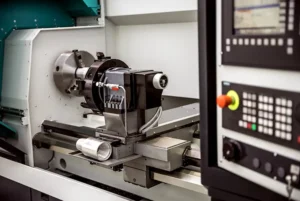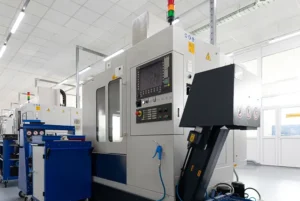Swiss machining is a high-perfection manufacturing fashion that has been used for over a century to produce small, intricate corridor. It’s the go- to reuse for diligence taking extreme delicacy, similar as aerospace, medical bias, and electronics. But what exactly sets Swiss lathes piecemeal from traditional lathes, and why are they so largely valued? In this composition, we’ll dive deep into how a Swiss lathe workshop, its advantages, and why it’s a chief in perfection manufacturing.
What Is a CNC Swiss Lathe?
A CNC Swiss lathe is an automated, computer-controlled interpretation of the traditional Swiss- type lathe. The”CNC” stands for” Computer Numerical Control,” meaning the machine’s operations are driven by a computer program for maximum perfection.
What makes CNC Swiss lathes so special is their capability to handle complex shapes and high volumes with impeccable thickness. These lathes feature a sliding headstock and companion bushing, which companion and support the workpiece as it’s crafted, enabling largely accurate cuts.
Crucial Features of CNC Swiss Lathes
- Sliding Headstock: The workpiece is fed through the tool by the sliding headstock, which provides superior control over small- periphery corridor.
- Companion Bushing: A companion bushing supports the workpiece, precluding deviation and maintaining alignment during machining. This is particularly important for long, thin corridor that would else flex.
- Multi-Tool Setup: Swiss lathes can hold multiple tools, allowing for contemporaneous operations. This reduces cycle time and improves effectiveness.
Swiss Lathe vs. Conventional Lathe Crucial Differences
Swiss lathes and conventional lathes both serve the same purpose — slice, shaping, and turning accoutrements but they do so in different ways. Then’s a breakdown of how these two machines compare:
| Feature | Swiss Lathe | Conventional Lathe |
| Workpiece Size | Ideal for small, precision parts | Suitable for larger workpieces |
| Guided Movement | Sliding headstock and guide bushing for support | Fixed tool positions, no guide bushing |
| Precision | Exceptional for tight tolerances (microns) | Good for larger tolerances (thousandths) |
| Tooling | Can hold multiple tools for simultaneous operations | Limited number of tools, typically one at a time |
| Speed | Faster for small parts with complex features | Slower for smaller or more intricate parts |
Why does this matter?
For manufacturers creating small, complex corridor with tight forbearance, the Swiss lathe is the clear choice. On the other hand, for larger, simpler corridor, a conventional lathe might be a further cost-effective option.
Advantages of Swiss- Type Lathes
Swiss- type lathes come with a range of benefits that make them necessary in high-perfection diligence. Then’s why they stand out:
1. Unmatched Precision: Swiss lathes can achieve forbearance as tight as +/- 0.0002 elevation or +/- 0.005 mm. This makes them ideal for critical operations in medical, aerospace, and electronics manufacturing.
2. Complex Part product: These machines are designed to handle corridor with multiple features. Thanks to their sliding headstock and companion bushing, Swiss lathes can perform intricate cuts and operations like drilling, milling, and turning, all at formerly. This reduces cycle time, adding overall productivity.
3. High effectiveness: The capability to hold multiple tools and perform contemporaneous operations means corridor can be produced faster than with conventional lathes, all while maintaining perfection.
4. Superior Surface Finish: The companion bushing and stable slice terrain help produce corridor with excellent face homestretches, reducing the need for fresh finishing processes and minimizing waste.
5. Versatility: Swiss lathes can reuse a variety of accoutrements , from essence to plastics to mixes. Their inflexibility makes them suitable for a wide range of diligence.
How Precise Are Swiss Lathes?( Tolerances & Accuracy)
The position of perfection that Swiss lathes offer is one of their biggest selling points. Swiss lathes can hold forbearance as tight as 0.0002 elevation( 0.005 mm), which is critical for diligence like aerospace, where a millimeter can make the difference between safety and failure.
For illustration, in medical device manufacturing, where indeed the fewest divagation can lead to failure, Swiss lathes insure that each part is produced with unequaled delicacy. Factors like catheters, surgical tools, and implants need to fit within the most exact specifications, and Swiss lathes deliver that thickness with ease.
How does this position of perfection restate into practical operations?
- Aerospace corridor like energy injectors or faucets must meet exact forbearance to insure the safety and trustability of aircraft machines.
- In medical bias, corridor like stents and prosthetics calculate on the perfection of Swiss machining to insure proper functionality and fit.
What Happens If You Use the Wrong- Sized Guide Bushing?
The companion bushing in a Swiss lathe is pivotal to icing that the workpiece stays duly aligned during machining. However, it can lead to a host of problems, similar as:
1. Inaccurate Cuts: If the workpiece isn’t held forcefully, it can move during machining, leading to crimes like out- center cuts.
2. Tool Wear: Misalignment can beget uneven pressure on the tools, leading to unseasonable wear and tear or breakage.
3. Imperfect corridor: Parts that aren’t duly supported are more likely to suffer blights like screwing or face defects.
4. Increased Cycle Time: Machines may struggle to maintain delicacy, which increases the time it takes to complete each part.
In substance, choosing the correct companion bushing size is a simple yet pivotal step in icing both perfection and effectiveness.
Common Uses for Swiss Machining
Swiss lathes are necessary for producing small, precise factors across a variety of diligence. Then are some of the most common operations:
- Medical Devices: factors like surgical tools, stents, and implants bear extreme perfection for functionality and safety. Swiss lathes give the tight forbearance demanded for these delicate corridor.
- Aerospace: Parts similar as valves, connectors and gears that must operate reliably under extreme conditions.
- Electronics: Small factors like connectors, pins and sensors need to be manufactured with high delicacy to fit within bitsy electronic bias.
- Automotive: High- performance factors similar as energy injectors, valves, and sensor parts that need to meet strict specifications.
Whether it’s for medical, aerospace, or automotive manufacturing, Swiss lathes are essential for producing corridor that bear both perfection and reliability.




